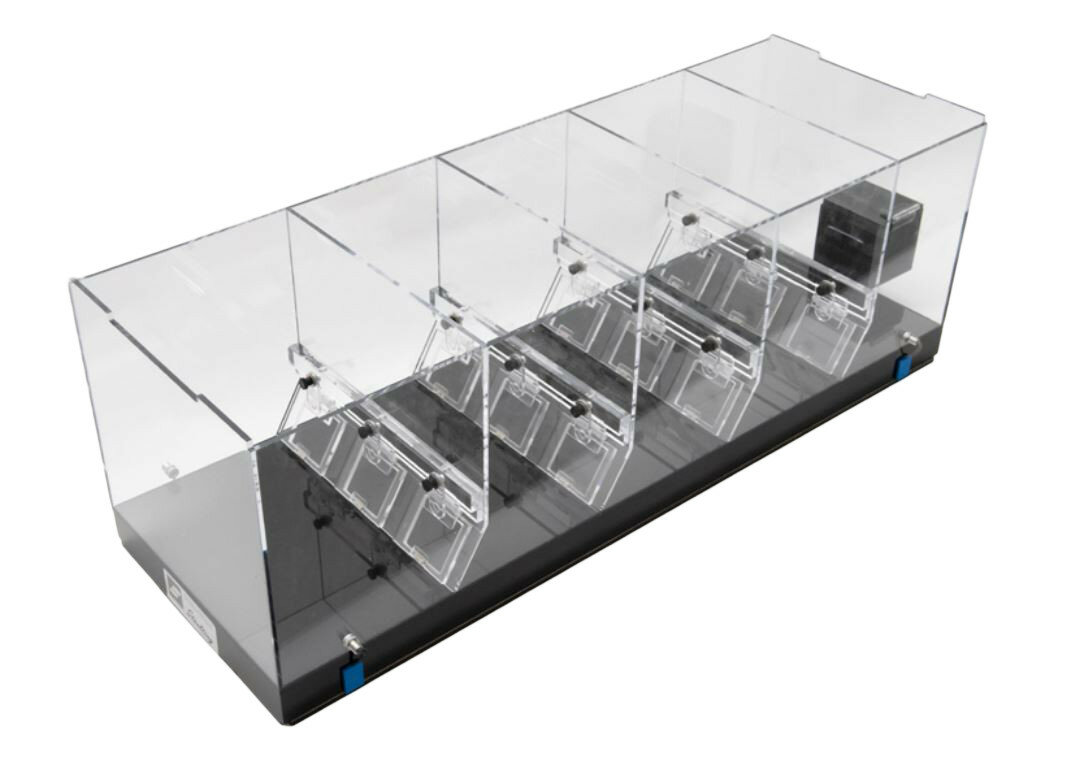Please specify the quantity of product(s).



Repeated Acquisition and Performance Chamber (RAPC)
| Item | Product | Price | QTY |
|---|---|---|---|
| 66000 | RAPC Repeated Acquisition and Performance Chamber, Complete | Login |
Automated assessment of spatial learning and memory
Features
- Automated data collection results in high throughput and data collection accuracy
- Acrylic construction allows for easy animal observation
- ANY-maze Software control provides ease of operation
- A single personal computer can collect data from up to 16 chambers simultaneously
- ANY-maze software automatically configures the experiments
- ANY-maze controls the experiment flow, data collection and statistical analysis
- The chamber is equipped with two Mylar speakers to generate white noise or provide auditory cues
RAPC is a behavioral monitoring apparatus designed to completely automate and assess spatial learning and memory. RAPC enhances the accuracy of recording temporal measurements, and error scoring, during spatial learning and memory experiments, through the use of the ANY-maze data acquisition software and electronic sensors. In fact RAPC is an ANY-maze software driven product. The software can be used to track as many as 16 chambers simultaneously, and performs full statistical analysis of results immediately upon completion of the experiment.
Furthermore, since temporal measurements and error scoring are the key variables monitored during this type of maze-based experiment, the RAPC System eliminates the need for visual monitoring and manual scoring by the attending observer. This results in higher throughput and more reliable and accurate data collection.
How RAPC Works
The RAPC apparatus consists of a rectangular acrylic chamber with the ‘start box’ and reward compartment at opposite ends. The chamber is divided into five compartments of equal size, separated by four transparent panels, each equipped with three electronically-monitored, one-way doors. An animal successfully progresses through the apparatus, beginning in the ‘start box’ and subsequently passing through each chamber on its way to the reward chamber. In the progression from one chamber to the next, the animal is confronted with a choice of which door to open. Errors are scored for attempting to open a locked door (doors are locked and opened manually).
The distinctive and flexible RAPC design allows the system to be used with a positive reinforcement-based operant paradigm, with alternating learning and performance components during each experiment session (different auditory stimuli signal which component is currently in effect). This unique, positive-reinforcement based paradigm allows the researcher to evaluate learning, versus rote performance, on a within-subject and within-behavioral test session basis.
|
Specifications |
|
|
Chamber Length (including Start House) |
35 in. (89cm) |
| Height (including rubber feet) | 11 in. (28cm) |
| Depth (including thumb screws) | 11 in. (38cm) |
| Weight (chamber only) | 15 lbs. (7kg) |